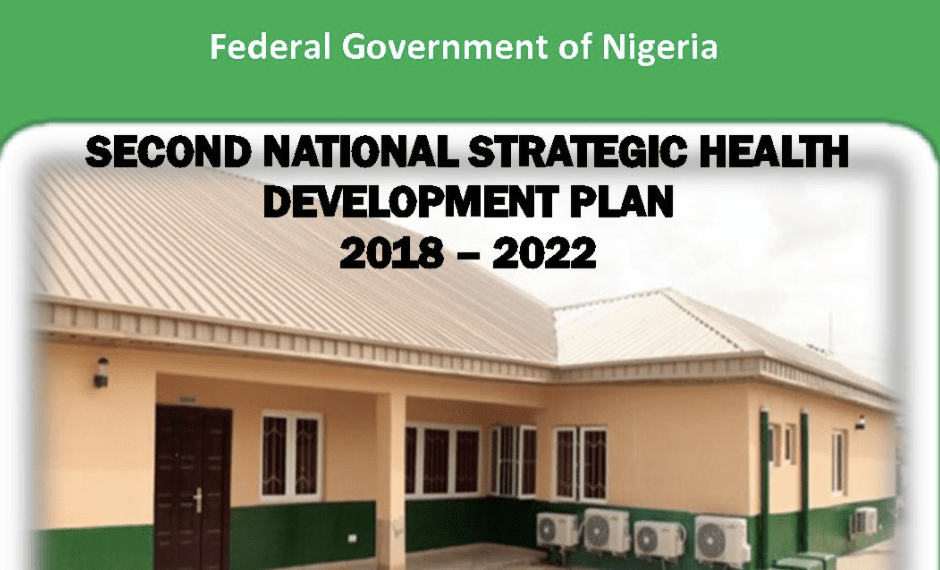For a plan such as the second National Strategic Health Development Plan (NSHDP-II) that is expected to cost up to N6.07 trillion, an updated appraisal of achievements since its implementation is necessary. This is to ensure that all targets of the plan are met and that the plan is not just an on-paper plan. Appraisals of this nature are also important to avoid a repeat of the abysmal performance of NSHDP-I which had only 2 of the 52 set targets met.
NSHDP-II is a commitment to operationalize the universal health coverage. The plan is anchored on the National Health Policy, 2016 with a timeline from 2018 to 2022. The overarching goal of the NSHDP-II is to address the inadequate financing of healthcare at the three levels of government.
The Strategy targeted ameliorating health sector’s challenges including the burden of diseases and the management of the national health system. Also, to improve mobilization and utilization of health resources, service delivery and community involvement.
Additionally, the strategy is to ensure strategic collaboration and coordination, reverse low level of health financing and weak Primary Health Care structures. With regard to monitoring and evaluation systems, the plan is a roadmap for effective implementation of the State Strategic Health Development Plans.
Health Financing Does Align with NSHDP-II
In terms of health service delivery, the NSHDP-II in line with the national health policy hopes to have one functional primary health clinic per ward. However, public spending and investment in PHC between 2019 and 2020 still do not reflect that they share the vision of scaling up PHC. It has failed to meet the Abuja declaration and does not meet the WHO standard.
A Dataphyte analysis shows that the total health budget rose from N424.03 billion in 2019 to N427.30 billion in 2020. Nevertheless, the capital expenditure which is a reflection of the infrastructural investment in health declined since 2018.
For instance, in 2018, when the NSHDP-II was signed into action, the capital budget of health was N86.49 billion. This figure declined to N57.09 billion in 2019 and even lower to N46.48 billion in 2020.
This level of investment does not show any commitment to a plan that is meant to better primary health care services in the country. Judging by the prevention and management of disease outbreak from 2018 when the NSHDP II was implemented until now, there is no substantial achievement of the NSHDP II to relieve the health sector of the burden of diseases.
Missed Opportunity with COVID-19 and the increasing Case of Lassa Fever
Despite the long existence of the Lassa fever disease, especially with the increasing number of suspected cases since 2016, the disease has not been better managed. Efforts to prevent the disease are clearly not working due to the flawed primary health care system. As of 5th April 2020, there are 963 confirmed cases which are 153 more than the total confirmed cases in 2019 and 330 more than the total confirmed cases in 2018. From the confirmed cases, a total of 188 deaths have been recorded in less than a quarter of the year.
This is high compared to a total of 167 deaths recorded all through 2019 and 171 deaths recorded in the whole of 2018. Looking at reasons for the great increase in the number of deaths, the following comes to mind; increase in rodent population as a result of poor environmental sanitation, lack of consumer awareness and community involvement, and poor investment in primary health care.
The COVID-19 pandemic would have been managed if there has been strict adherence to the NSHDP-II. A continuous decline in the health budget cannot cater for the mobilization and utilization of health resources, and the relief of the burden of diseases. These are a few of the targets of NSHDP-II.
Moreso, transparency issues exist around hazard allowance, and the general well being of health workers. It is important to note that lack of transparency leads to low trust among citizens and this is a major obstacle to achieving Universal Health Care.
Unfortunately, these challenges keep recurring. Over the last two decades, the economic success that has reclassified Nigeria as a middle-income country has not reflected in the success story of its health sector.
Generally, economic growth should lead to high health gains that would enable sustained growth. Improved health outcomes reduce production losses due to worker illness and better nutrition increases productivity.
Moreover, an improved health system contributes to increased savings rates because healthier people invest in their future financial needs. As such, no country will achieve sustained growth if it does not invest in health no matter the level of economic growth it attains.


